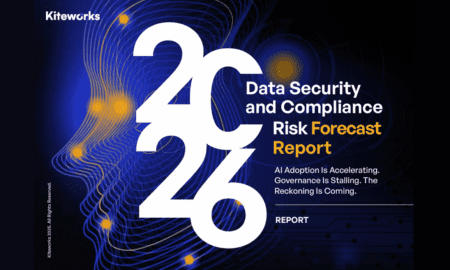When it comes to building a productive, high-performing team, employee engagement is non-negotiable. Engaged employees bring energy, purpose, and innovation to their roles — but what happens when that connection fades?
Not all disengagement looks the same. Some employees openly express dissatisfaction, while others quietly drift through their tasks, emotionally checked out. This is where understanding the difference between unengaged and disengaged employees becomes critical.
While both may appear similar on the surface, their behaviors, mindsets, and impact on the workplace are very different. One is passively coasting through the workday, the other may be actively harming morale. Knowing the difference allows managers to take targeted action before the situation escalates.
In today’s data-driven workplace, tools like employee monitoring software offer an added advantage by helping leaders detect these patterns early, providing measurable insights to guide intervention strategies.
What Does It Mean to Be Unengaged?
An unengaged employee is someone who is mentally and emotionally detached from their work — but not necessarily in a disruptive way. They tend to do the bare minimum, avoid volunteering for extra tasks, and show little interest in the company’s bigger goals.
Key traits of unengaged employees include:
- Neutral attitude — neither overtly negative nor positive.
- Low initiative — rarely suggest improvements or take on extra responsibility.
- Minimal collaboration — work independently without much team engagement.
Unengagement often develops gradually. It may stem from feeling underchallenged, lacking recognition, or not seeing a path for career growth. While they’re still fulfilling their basic duties, their lack of enthusiasm can quietly erode team morale.
Modern employee monitoring software can help spot early signs of this behavior — such as consistently low engagement in collaborative tools, minimal activity outside assigned tasks, or reduced time spent on meaningful work.
What Is a Disengaged Employee?
Disengaged employees are a step beyond unengaged — they’ve mentally checked out and may actively express dissatisfaction. Unlike their unengaged counterparts, they often carry a negative attitude that can influence others.
Common causes include:
- Toxic workplace culture.
- Poor communication from leadership.
- Lack of recognition and appreciation.
- Burnout from excessive workload.
Disengaged employees might:
- Miss deadlines or submit low-quality work.
- Frequently call in sick or arrive late.
- Resist collaboration or ignore feedback.
- Voice dissatisfaction in ways that affect morale.
If left unaddressed, disengagement can spread, damaging both productivity and company culture.
Unengaged vs Disengaged Employees: The Four Key Differences
Understanding how these two states differ is crucial for taking the right approach:
- Productivity and Output
- Unengaged: Work is completed, but without creativity or extra effort.
- Disengaged: Productivity drops sharply, and errors increase.
- Attitude Toward Work
- Unengaged: Indifferent and neutral.
- Disengaged: Frustrated, negative, and often vocal about it.
- Commitment to the Company
- Unengaged: Might still be open to improvement if given the right opportunities.
- Disengaged: Emotionally resigned and possibly looking for another job.
- Impact on Team Morale
- Unengaged: Limited influence, though their indifference can spread over time.
- Disengaged: Actively damages morale and collaboration.
Spotting these differences early allows managers to tailor their re-engagement efforts more effectively.
Why the Difference Matters to Your Business
The cost of low engagement is staggering. Gallup reports that disengaged employees cost businesses 18% of their annual salary in lost productivity. Add in increased absenteeism, higher turnover, and reduced customer satisfaction, and the financial impact grows even larger.
Both unengaged and disengaged employees reduce efficiency, but disengaged ones often have a more visible — and contagious — effect on the workplace. Addressing these issues early can save companies time, money, and valuable talent.
Using Employee Monitoring Software to Identify Early Warning Signs
You can’t fix what you can’t measure. This is where employee monitoring software becomes an invaluable tool for managers and HR professionals.
Rather than relying solely on observation or annual reviews, monitoring tools provide real-time data that highlights changes in work patterns, productivity levels, and engagement metrics.
For example, a platform like EmpMonitor (used ethically and transparently) can:
- Track active and idle times to detect drops in focus.
- Monitor workload balance to prevent burnout.
- Identify collaboration gaps between team members.
By pairing this data with open communication, managers can intervene before unengaged employees slip into full disengagement.
How to Re-Engage Unengaged Employees
The good news is that unengaged employees are often easier to re-engage than disengaged ones. They haven’t entirely lost interest; they just need renewed purpose and motivation.
Practical strategies include:
- Provide Clear Career Paths – Show them how their role can evolve.
- Recognize Contributions – Publicly acknowledge small wins to boost morale.
- Encourage Autonomy – Give them ownership of projects to increase investment.
- Connect Work to Purpose – Explain how their efforts impact company goals.
Handling Disengaged Employees with Care
Disengaged employees often require more focused intervention.
Steps to take include:
- Listen First – Understand the root of their dissatisfaction.
- Address Workplace Issues – Tackle leadership, workload, or culture problems head-on.
- Offer Support – Provide coaching, mentoring, or role adjustments.
- Set Clear Expectations – Outline measurable performance goals for improvement.
Sometimes, disengagement can’t be reversed — but by addressing it early, you increase the chances of retaining valuable team members.
Preventing the Slide from Engagement to Disengagement
Prevention is more effective than repair. Building a workplace that supports long-term engagement involves:
- Effective Onboarding – Make employees feel welcome and informed from day one.
- Ongoing Learning Opportunities – Keep skills fresh and motivation high.
- Transparent Communication – Ensure leadership shares both successes and challenges.
- Inclusive Culture – Make every employee feel valued and heard.
When combined with insights from ethical monitoring tools, these strategies create an environment where engagement thrives.
Final Thoughts
The line between unengaged and disengaged employees is thinner than many realize, and without proactive measures, one can easily turn into the other.
By combining empathetic leadership with the actionable insights provided by employee monitoring software, organizations can detect warning signs early, address underlying issues, and maintain a productive, motivated workforce.
A subtle shift in approach — from reactive problem-solving to proactive engagement, can make all the difference in retaining top talent and ensuring long-term success.



































